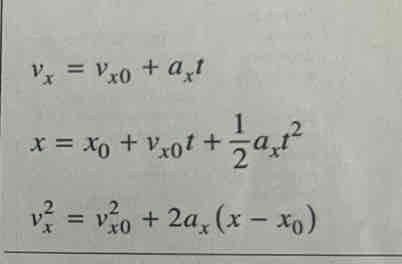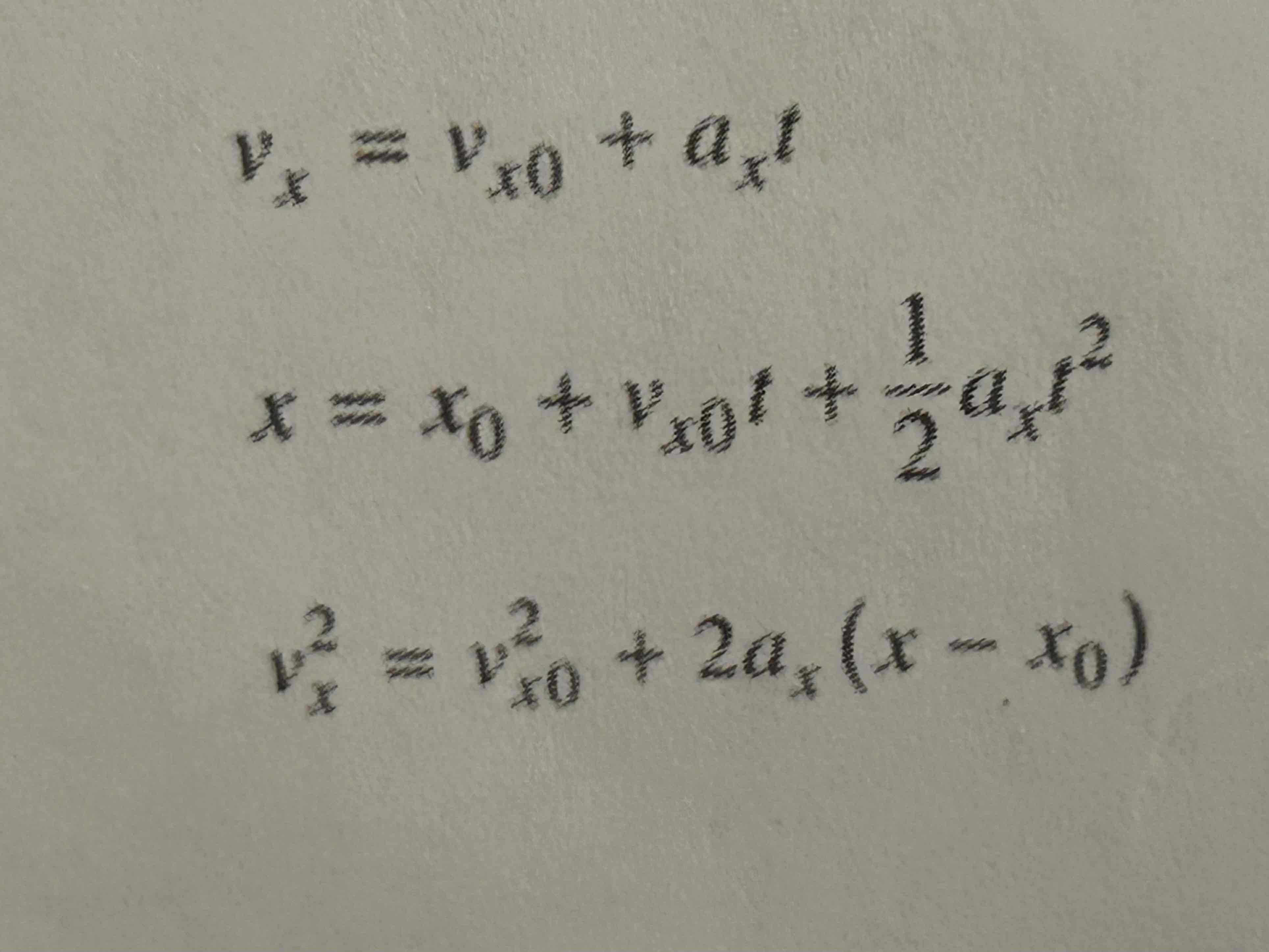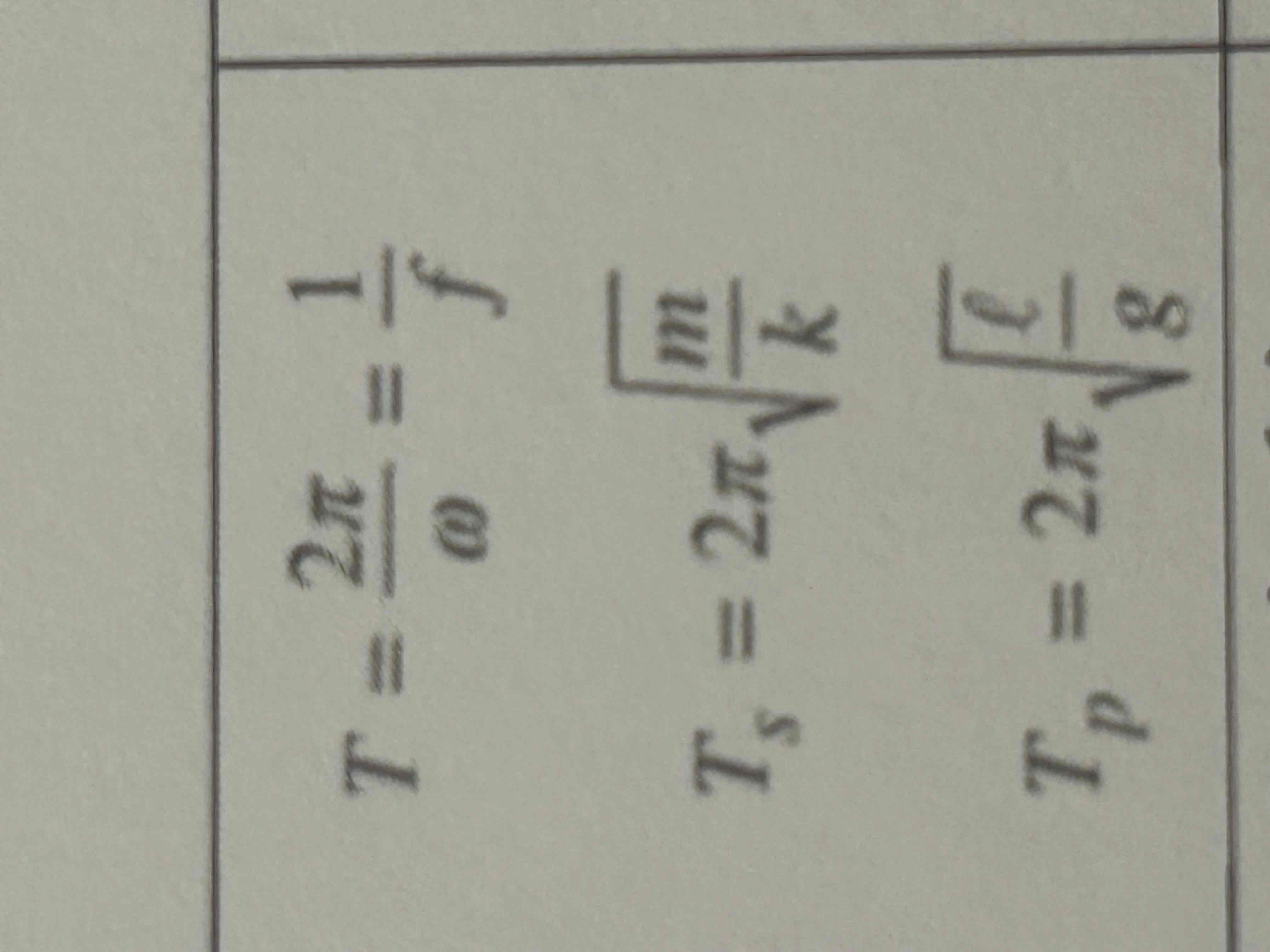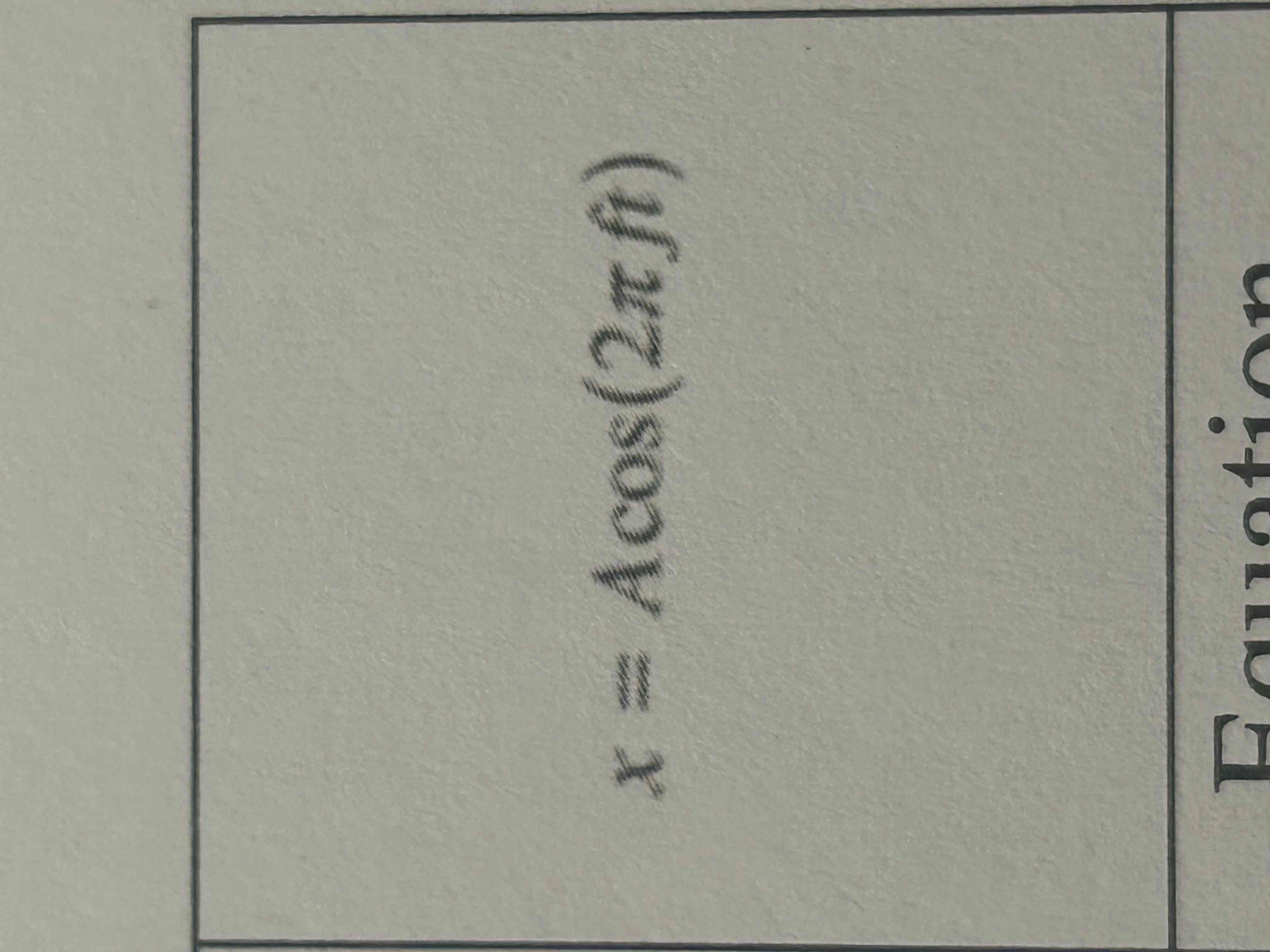AP Physics 1 Equations and Facts
1/23
There's no tags or description
Looks like no tags are added yet.
Name | Mastery | Learn | Test | Matching | Spaced |
|---|
No study sessions yet.
24 Terms
Constant acceleration
Special case freefall
Freely falling objects experience a constant downward acceleration of 9.8 near the Earth’s surface
Falling objects are experienced freefall when the only force acting upon them is gravity
Free fall is a good approximation for dense objects that do not fall too fast
Objects can be in free fall both while rising and falling
Freely falling objects release together fall together

The chart
slope, equation, area
Newton’s 1st Law
An object will not accelerate unless pushed or pulled
Inertia=mass
Increasing inertia decreases acceleration
Inertia cannot prevent motion, only forces can do that
Newton’s Third Law
For every action there is an equal and opposite reaction, always true
No time delay between action and reaction
Equal and opposite forces act upon different objects
Fg=mg
Mass stays the same
g = Freefall acceleration (can be used with constant acceleration equations for objects and freefall)
Force of gravity = weight
a = Fnet/m
What is it touching, are you on planet, is there friction?
Increasing inertia decreases acceleration
Ff= μFn
Kinetic friction: Opposes sliding created by surface bonds constantly breaking and reforming
Static friction: Opposes motion (traction) created when surface bonds stretch without breaking
Friction is proportional into normal force
Independent of surface area
Independent of velocity
Because bonds stretch (<) and break at max (=)
Kinetic friction is less than static friction
Ff= μkFn
Opposes sliding
Bonds break and reform
Smooth, dry, clean surfaces
Can push an object forward if both forces are in motion
Must break gravity into components to find normal force on a ramp
Ff= μsFn
Prevents sliding
Bonds stretch (<) until they reach breaking point (=)
Smooth, dry, clean surfaces
Provides the force that both speeds up and slows down cars
Must break gravity into components to find normal force on a ramp
Static friction adjusts to match pull
J=Fnet∆t
J=∆P
Useful for sharp impact and other non-constant force problems
P=mv
F∆t= F vs t area
Do not forget gravity for vertical problems
Fnet∆t=∆P=0 (momentum conserved) for isolated systems (no outside net force), sharp collisions
Pi=Pf
Momentum conservation
Only useful if you can track where the momentum goes
Works well for isolated objects (Fnet=0) on the system
Good approximation for relating the velocities right before to the velocities right after a sharp collision
m1v1i+m2v2i=m1v1f+m2v2f
For 2D, use vector components

Projectile Motion
Free fall
Horizontal motion (x-range)
Vertical motion (y-height)
Velocity must be broken into x and y components
Voxcosθ
Voysinθ
ac= v²/r
inward acceleration due to changing direction while moving in a circle
use inward - outward when applying fnet=ma to this situation
single object
a=rα
v=rω
connects system variables to single particle variables
describes a tangential acceleration
all points rotate the same (ω, α, θ)
s=rθ
1 rev= 2π rad = 360°
θ=θ0+ω0t+1/2αt²
ω=ω0+αt
constant acceleration equations for rotational motion
variables describe the rotational motion for the whole system
α=τnet/I
rotational motion version of Fnet=ma
moment-of-inertia increases as mass moves farther away from the fulcrum
L=Iω
angular momentum definition
Li=Lf angular momentum conservation
Always true, but only useful for isolated systems and sharp collisons
L=mvrperp for colliding objects
ΔL=τΔt
Angular version of Fnet=ΔP
Useful for sharp impact and other non-constant force problems
τΔt= τ vs t area
W=Fᵢᵢd=Fdcosθ
Pₐᵥ₉= W/△t=△E/△t
Pᵢₙₛₜ=Fᵢᵢv=Fvcosθ
Work describes the transfer of energy
Net work equals the change in kinetic energy
Area under the F versus D graph equals work
Power describes how fast work is done
△Ug= mg△y
UG=-Gm₁m₂/r
GPE ?: is it off the ground?
mgh: it’s a formula that works well near a planet’s surface
Second formula needs to be used away from the surface
Earth/object system must be used
Fs=-k△x
△Us=1/2k(△x)²
SPE ?: is there a compressed or stretched spring?
Hooke’s Law: Spring force is proportional to stretch
Object/spring system must be used
K=1/2mv²
K=1/2Iω²
KE ?: Is it moving?
KEᵣₒₜ ?: Is it spinning?
v=rω if the object rolls without slipping

Period is independent of amplitude for both a pendulum and a spring-made system
Pendulum period is independent of mass, too

Equation describing an oscillating mass-spring system (Simple Harmonic Oscillator)
x vs t graph is a sinusoidal with the amplitude telling you the max displacement from equilibrium